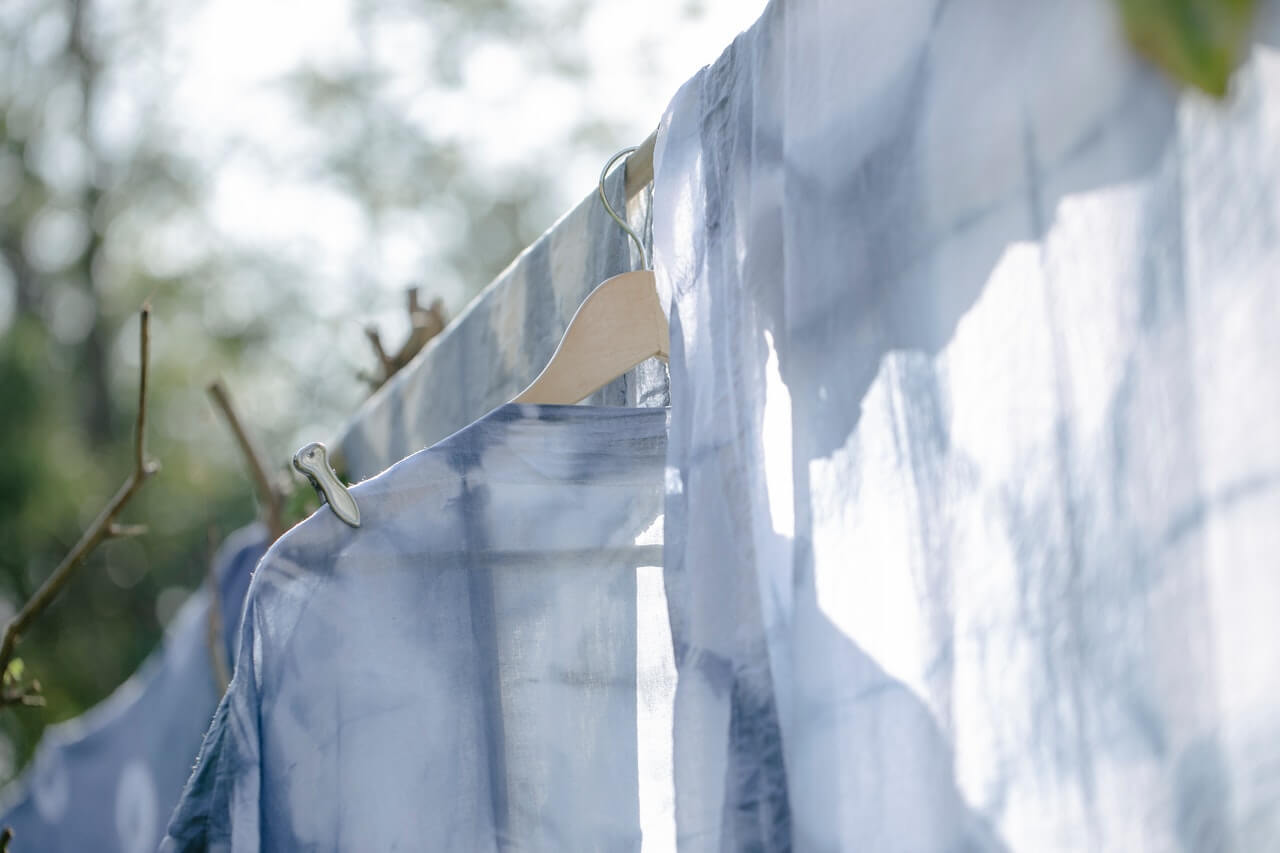
Washing your clothes by hand is the way to go if you care about them and want them to last a lifetime. We're here to help you get a gentle, effective clean by handwashing your clothes at home.
We've been handwashing clothes for thousands of years, but with the introduction of machines that do our laundry for us, handwashing has become a strange and frightening prospect. Why would we purposefully throw our clothes into the kitchen sink?
Handwashing clothes is simple, effective, and often the only option (as opposed to dry cleaning) for many delicates. You'll have a new secret weapon in achieving a fresh, clean wardrobe with Grove's handwashing guide.
Better is a subjective term. For all types of clothing, handwashing is unquestionably effective. It's especially good for delicates, wool, cashmere, and silk, which can't (or shouldn't) be washed or dried in a machine.
Handwashing can also save you money on your dry cleaning bill.
You certainly could, but you shouldn't. Handwashing clothes is similar to putting them in the washing machine. To clean and freshen clothes, both use movement, water, and a cleaning agent.
Your best bet is to use a cleaning agent designed for clothes rather than skin. The best laundry detergents are free of harmful chemicals such as dyes and fragrances, which are just as bad for you as they are for your clothes.
In simple steps, learn how to handwash your clothes.
It's time to roll up your sleeves and put your magic hands to work, now that your laundry has been divided into like-minded groups.
As always, the care label on your clothes will provide important information about how to clean them properly. Make sure to wash clothes that require a different temperature or detergent than the rest in a separate load.
Pretreat any pesky stains you've been glancing at, especially in white clothes, just like you would for a regular laundry load. You can use a commercial stain remover, a little detergent, hydrogen peroxide, or a baking soda-and-water paste to pretreat a stain.
Fill a large basin with water in a clean tub, sink, or other large basin. Room-temperature water is best for most standard garments. However, always check your care tags for specific instructions, as some fabrics, such as wool, cashmere, and silk, should only be washed in cool or cold water.
For the most part, your regular liquid laundry detergent will suffice. You'll only need about a teaspoon of detergent, which is significantly less than you'd use in your washing machine.
Consider a specialty detergent formulated for delicate fabrics like wool, cashmere, and silk, or at the very least, choose a detergent free of scents, fabric softeners, dyes, and other potentially harmful chemical additives.
Fill your water basin halfway with your sorted clothes. Swish your clothes through the water with your hands to simulate a gentle washing cycle. This will aid in the activation of the detergent and the effective cleaning of your clothes. Water discoloration during the wash cycle is normal; it's just dirt and a little dye escaping from your clothes!
Press the clothes against the bottom of the basin as if kneading them for a deep clean. Twisting, wringing, or scrubbing, on the other hand, can stretch and damage the fabric.
Even though you're washing in a sink, you shouldn't treat your clothes like dishes. Allow the clothes to soak for 15 to 30 minutes after swishing or kneading.
Drain the sudsy water and replace it with cool water after the soak. Rinse the now-soiled clothes by swishing them around and pressing non-delicates against the basin's bottom. Drain the water and repeat until the water, as well as your clothes, are suds-free.
Drying clothes that are still soiled with detergent can be harmful to the fabric. It's not a bad idea to give them one last rinse before drying to remove any cleaning agents.
Drying handwashed clothes by hand takes longer than using the dryer. However, the hand-drying process is very gentle on fabrics, so your hand-drying TLC will benefit clothes of all kinds.
Folding, pressing, and squeezing garments with your hands works best.
Twisting and wringing cause fabric to stretch and wear out, so avoid them at all costs.
Place a dry bath towel on a flat surface that you don't mind getting a little wet. Place your damp garments on top of the towel one at a time and roll them up like a yoga mat.
When the roll is fully rolled, press it to remove and absorb any excess water.
Repeat the process as necessary until your clothes are only slightly damp.
Place a fresh dry towel on a flat surface or drying rack, preferably in a room or location with plenty of airflow and sunlight. Allow damp clothes to air dry by laying them flat on a towel or draped across the rack. They should be flipped every so often. If your towel becomes too wet, replace it with a dry one.
Clothing dries at different rates, so don't be surprised if your athletic wear dries faster than your denim.
ViralFash collects & utilizes cookies from third-parties & affiliate networks to improve user experience. If you buy a product or service after clicking on one of our links, we may get a commission.